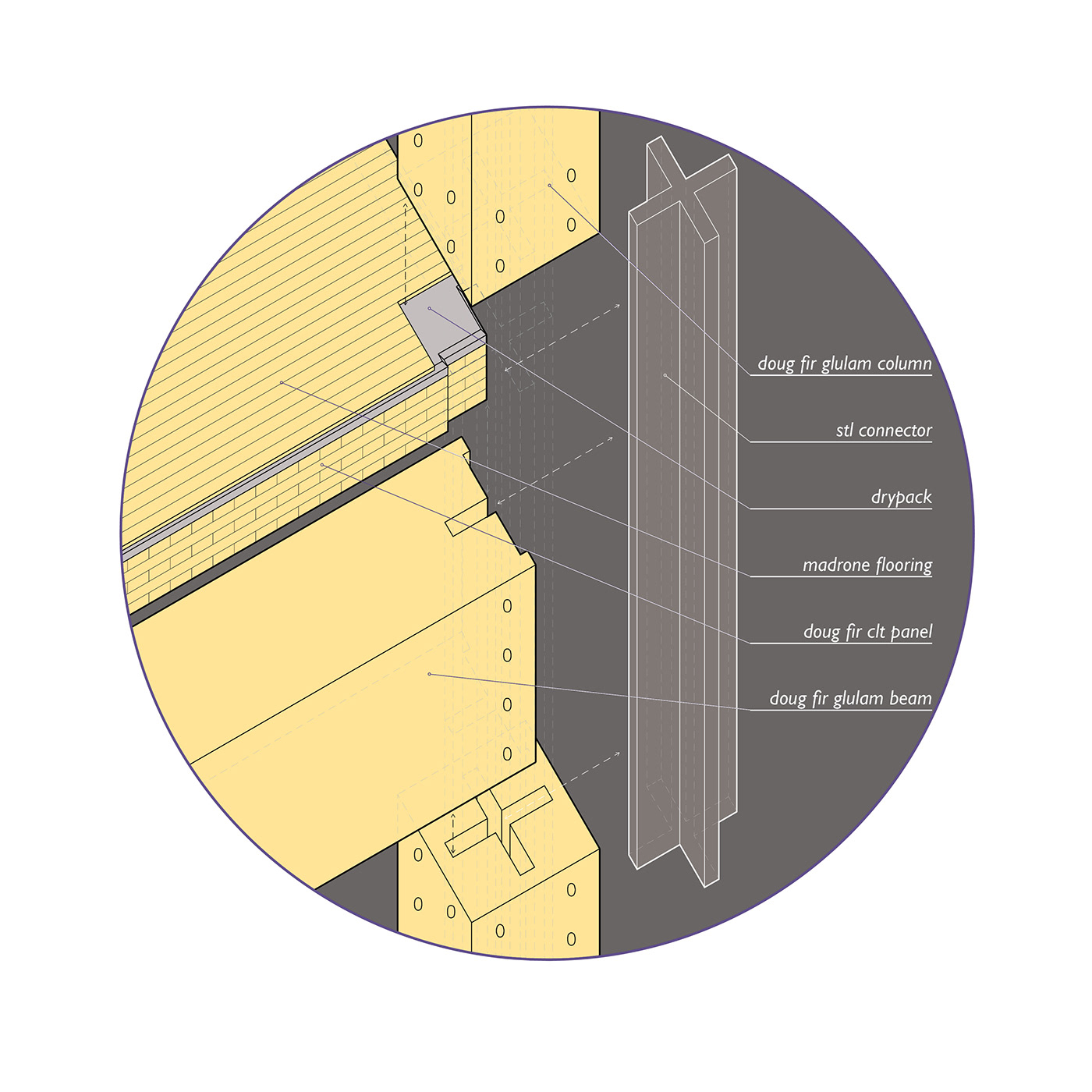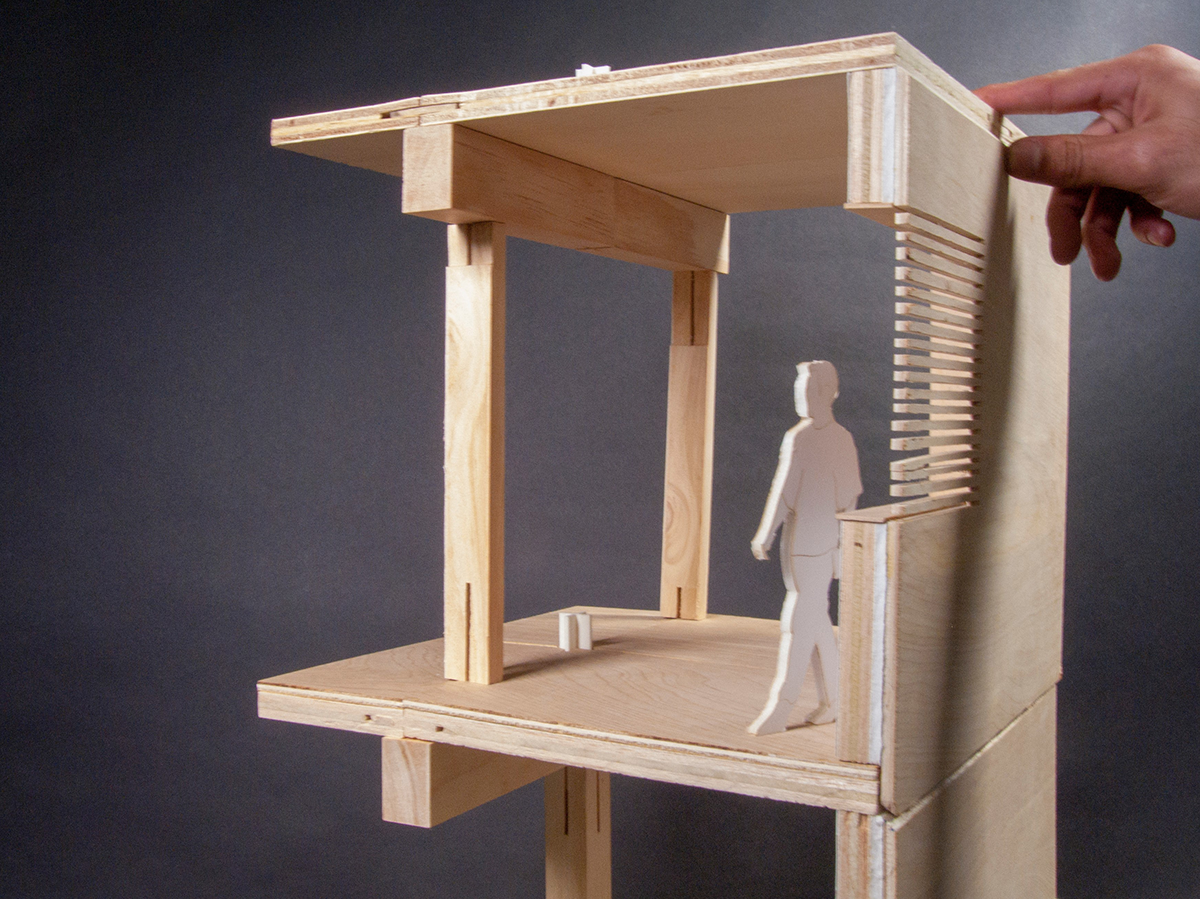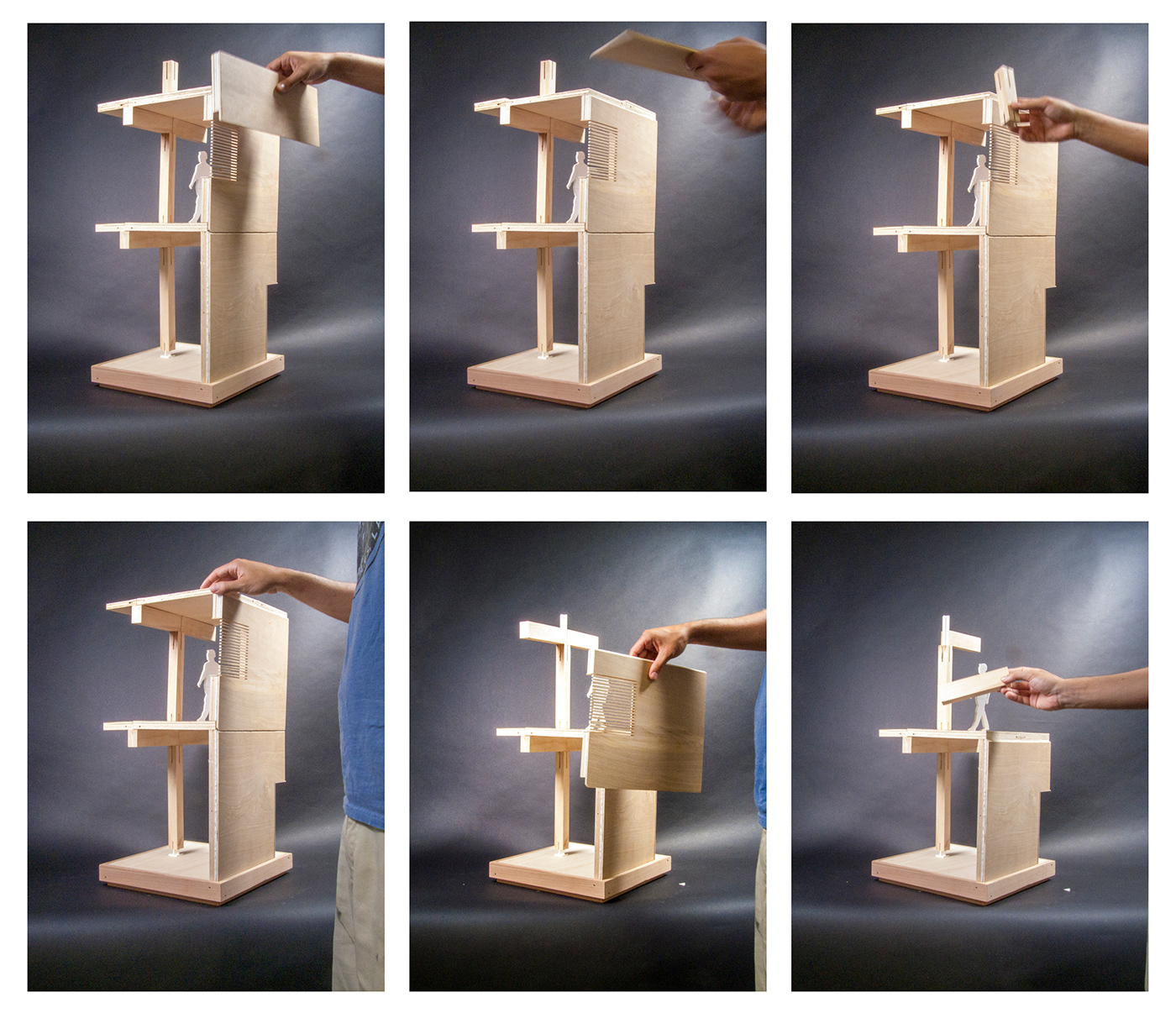
timeline of material resources on site
The work below is the design exploration of my thesis "Designing Material Networks". The paper was selected as the top thesis paper by faculty and the work was selected for exhibition.
The thesis focuses on the life cycle of wood and how architecture can embed itself in the process to maximize its economic, environmental, and societal benefits.
The thesis explores a critical issue for the world today: how can architecture leverage the infrastructure of global solutions to create local amenities?

sequence of carbon negative development balancing urbanism and agro-forestry
Anthropocenic architecture sees a building as a convergence of energy and materials flows that is entangled with natures across the globe and maximizes its positive
impact.
impact.

final boards with wood totems and projected map and renders
"[B]uildings are understood not as containers for humans, where program contents can be placed, but as the processes of shaping the spheres and atmospheres that constitute the specific livable environments that we inhabit.”
-”What is Cosmopolitical Design?” Albena Yaneva
-”What is Cosmopolitical Design?” Albena Yaneva

prototypical buildings and blocks responding to context of inglewood oil field

The grid is split up by a green belt of picturesque forested areas surrounded by more rigorously gridded agro-forestry areas. The green fingers provide areas for hiking and recreation while capturing run off. By splitting the grid for cars but continuing shaded pedestrian paths walking is encouraged.
Thesis Abstract_Recent work by architects on material life cycles and carbon sequestration has produced a large body of technical prowess but this knowledge struggles to scale. Synthesizing this emerging body of research with larger discourse about Post-Environmental Policy could produce a new model of practice that straddles the border between urban planning, resource management, and architecture. This new model will test the idea of every act of building as a phased development and test new outcomes, benefits and drawbacks of increased entanglements and time frames of what constitutes “building”.

section axon of building with detail call outs
Urban scale material life-cycles leverage buildings as tools of carbon sequestration.
The conceptual shift of building from end to midpoint in a designed material life-cycle requires new tectonic aesthetics that favor maximized material use and ease of deconstruction.
The conceptual shift of building from end to midpoint in a designed material life-cycle requires new tectonic aesthetics that favor maximized material use and ease of deconstruction.

call out: column/floor/beam/knife plate connection

call out: floor/exterior wall connection
Anthropocene appropriate architecture designs not just the building. It designs material networks themselves through carbon sequestration, ease of disassembly and maximization of material use. Carbon dioxide from construction affects every part of our biosphere, but stopping development is not the answer in a world with populations struggling for access to basic human necessities. More entangled and thoughtful development is the only way forward. Buildings are not isolated objects. Buildings are a designed phase in a materials arc from start to end and all parts of the arc need to be engaged with and explored to continue conditions required for comfortable human life.

detail model with temporary jacks in place while the column is swapped into place

detail model constructed to show the swappable parts provide consistent demand for carbon negative growth and limit the amount of harmful chemicals used to stop decay
"desire to connect the memory of forestry to the buildings... is a powerful cultural force in forested areas and would become engrained into residents who live within any carbon
plantation development."
plantation development."
If you are interested in reading the full document please reach out. Thank you!






